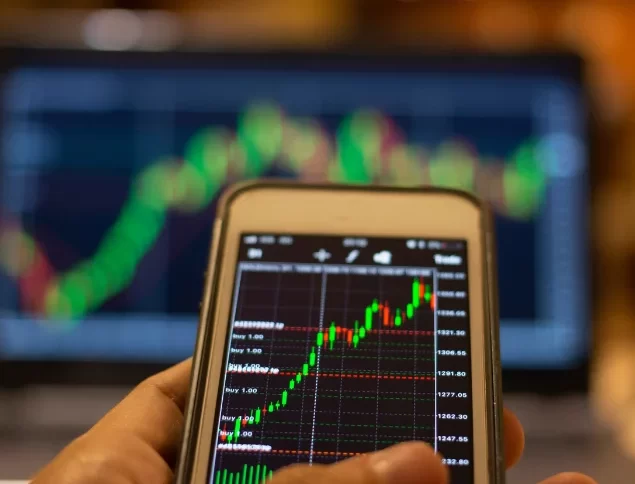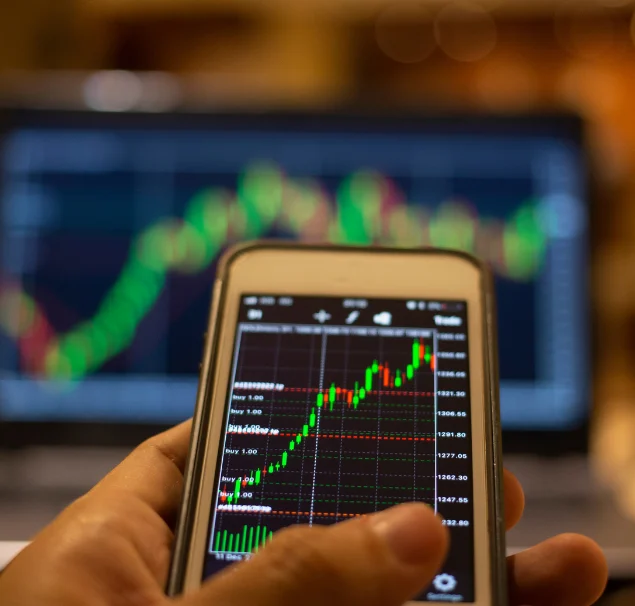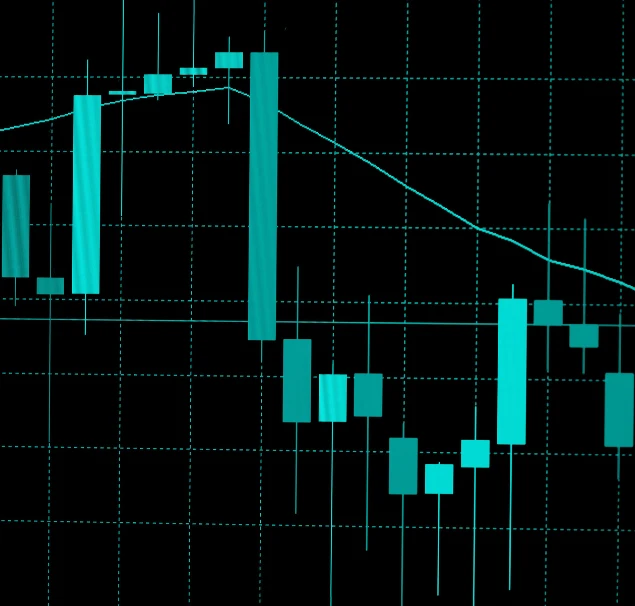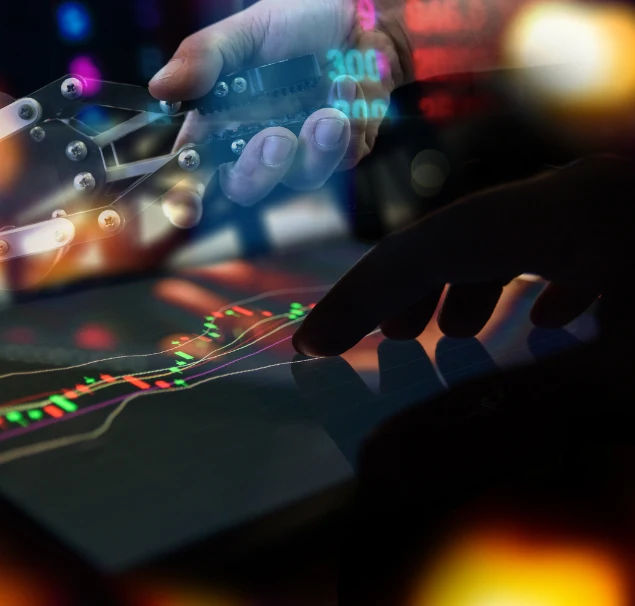
Introduction to Automated Forex Trading Systems
In the dynamic world of foreign exchange (Forex) trading, the emergence of automated forex trading systems has marked a significant shift in how trades are executed and managed. These systems, often driven by complex algorithms and sophisticated software, are designed to automate the trading process, making it more efficient, accurate, and potentially more profitable.

What is Automated Forex Trading?
Automated Forex trading, also known as algorithmic trading, involves using computer programs to execute trades in the Forex market. These programs are designed to follow specific sets of instructions, or algorithms, that determine when to buy or sell currencies based on market data and analysis. This technology allows for rapid trade execution at a volume and speed that is impossible for a human trader.
The Evolution of Automated Trading Systems
The evolution of automated trading in Forex began with institutional traders but has now expanded to retail traders, leveling the playing field. The advancement in technology, including faster computing power and more sophisticated software, has made these systems more accessible and affordable.


Components and Functionality
Key components of an automated trading system include the trading algorithm, risk management rules, and often, backtesting capabilities. The trading algorithm is the heart of the system, programmed to identify trading opportunities based on market conditions and technical indicators. Risk management rules are set to limit losses and protect profits, while backtesting allows traders to test their strategy on historical data before applying it in live trading.
Impact on the Forex Market
Automated trading systems have significantly impacted the Forex market. They have increased market liquidity and brought more consistency in executing trading strategies. However, they have also raised concerns about market volatility and the potential for creating systemic risks due to their high-speed and high-volume trading capabilities.
In conclusion, the introduction of automated Forex trading systems has revolutionized the market, offering traders new opportunities and challenges. As these systems continue to evolve, understanding their mechanisms, advantages, and risks becomes increasingly important for anyone involved in Forex trading.
Table Of Content
The Advantages of Automated Forex Trading
Automated Forex trading systems have gained popularity among traders for their numerous advantages. These systems use complex algorithms to make trading decisions, offering a range of benefits from increased efficiency to enhanced risk management.
Increased Efficiency and Speed
One of the primary advantages of automated Forex trading is the efficiency and speed with which it can operate. These systems can process vast amounts of market data in milliseconds, executing trades much faster than a human trader could. This speed is crucial in the Forex market, where currency values can fluctuate rapidly.
High-Frequency Trading
Automated systems facilitate high-frequency trading, allowing for a large number of trades in a very short time. This capability can lead to the exploitation of small price discrepancies in the market, potentially leading to higher profits.
Emotionless Trading Decisions
Another significant advantage is the removal of emotional bias from trading decisions. Automated systems strictly follow the set criteria, unaffected by emotions like fear or greed that can lead to irrational decisions.
Consistent Application of Trading Strategies
This emotionless approach ensures consistency in applying trading strategies. Human traders might second-guess or skip trades based on emotional responses, but automated systems consistently execute trades as programmed.
Enhanced Risk Management
Automated trading systems can also incorporate sophisticated risk management strategies. Traders can set predefined risk limits for each trade, ensuring that losses are minimized.
Effective Money Management
These systems can effectively manage money by following rules that allocate capital per trade based on set criteria, such as the volatility of the currency pair being traded.
Backtesting Capabilities
A significant advantage of automated systems is the ability to backtest trading strategies using historical data. This feature allows traders to evaluate and refine their strategies, enhancing their effectiveness before applying them in live trading.
Strategy Optimization
Through backtesting, traders can optimize their strategies, adjusting parameters to improve performance based on past market behavior.
Accessibility and Flexibility
Automated trading systems provide accessibility and flexibility to traders. They can operate 24/7, taking advantage of opportunities in different time zones without the need for constant monitoring by the trader.
Diversifying Trading
These systems allow traders to diversify their trading, operating in multiple currency pairs and markets simultaneously, spreading risk and increasing potential for returns.
In summary, automated Forex trading offers numerous advantages, including increased efficiency, emotionless decision-making, enhanced risk management, backtesting capabilities, and greater flexibility. These benefits make automated systems an attractive option for both novice and experienced traders in the dynamic Forex market.
The Disadvantages of Automated Forex Trading
While automated Forex trading systems offer several advantages, they also come with their own set of challenges and disadvantages. It’s important for traders to be aware of these drawbacks to make informed decisions and manage their trading strategies effectively.
Over-Reliance on Technology
A significant concern with automated trading is the over-reliance on technology. Traders may become too dependent on their systems, potentially neglecting the importance of understanding market dynamics and trading fundamentals.
System Failures and Glitches
One of the risks of technology reliance is the potential for system failures or glitches. These can result in missed trades, duplication of orders, or incorrect execution of trades, leading to significant losses
False Sense of Security
Backtesting results can give a false sense of security. A strategy that performed well in past market conditions may not necessarily yield the same success in future markets.
Lack of Flexibility in Changing Markets
Automated systems operate based on predefined rules and algorithms. This rigidity can be a disadvantage in a market that is constantly evolving, as these systems might not adapt quickly to sudden market changes or unforeseen events.
Difficulty Adapting to Market Volatility
During periods of high volatility or atypical market conditions, automated systems may not perform as expected. This can result in poorly timed trades or missed opportunities.
Initial Cost and Maintenance
Setting up an automated trading system can be expensive. There are costs associated with acquiring the software, and ongoing expenses related to maintenance and updates.
Need for Continuous Monitoring
Despite being automated, these systems still require continuous monitoring. Technical issues, software updates, or changing market conditions necessitate regular oversight.
Potential for Overtrading
Automated systems, especially high-frequency trading setups, can lead to overtrading. This is when a system executes an excessive number of trades, potentially resulting in high transaction costs and diminished returns.
Balancing Trade Quantity and Quality
The challenge lies in balancing the quantity of trades with their quality. An effective system should filter opportunities to ensure that only the most potentially profitable trades are executed.
Limited Understanding of Market Context
Automated systems lack the human ability to interpret and react to qualitative factors like political events or economic news, which can have significant impacts on the Forex market.
Missed Trading Signals
Due to their reliance on specific criteria, automated systems may miss subtle trading signals that a human trader would catch, potentially leading to missed opportunities.
Emotional Disconnect
While removing emotional bias is often seen as an advantage, the emotional disconnect can also be a disadvantage. Traders may feel out of touch with the trading process, leading to a lack of intuitive decision-making.
Risk of Over-Optimization
Over-optimization, or curve-fitting, is another potential downside. This occurs when a trading system is excessively fine-tuned to historical market data, making it less effective in real-world trading conditions.
Underestimating Market Sentiment
Automated systems do not account for human sentiment, an important aspect of market behavior. This can sometimes lead to misaligned trading strategies during market events driven by investor sentiment.
Blending Automated and Manual Trading: Finding the Balance
In the world of Forex trading, neither automated nor manual trading systems are universally superior. Each has its strengths and weaknesses. The key to optimizing trading performance often lies in finding the right balance between the two approaches. This blending can harness the benefits of both, while mitigating their respective disadvantages.
Leveraging Strengths of Both Systems
The goal of blending automated and manual trading is to leverage the strengths of each. Automated systems excel in speed, efficiency, and removing emotional bias. In contrast, manual trading brings human judgment, adaptability, and the ability to interpret nuanced market signals.
Combining Speed with Insight
An effective strategy might involve using automated systems for quick market analyses and execution, while relying on manual oversight for strategic decisions, especially under unusual market conditions.
Risk Management and Diversification
A blended approach allows for more nuanced risk management. While automated systems can enforce strict risk parameters, manual trading offers the flexibility to adjust these parameters in response to market sentiment or major events.
Balancing Risk with Human Judgment
Incorporating manual oversight in risk management can provide a safety net against the potential pitfalls of automated systems, especially during high volatility.
Enhancing Strategy with Backtesting and Real-Time Analysis
Backtesting automated strategies can provide valuable insights, but real-time market analysis and adjustments are often necessary. Manual trading allows for these adjustments and for the application of insights gained from backtesting.
Dynamic Strategy Adjustment
Traders can use automated systems to test strategies and then apply manual adjustments based on real-time market conditions and emerging trends, thus creating a dynamic trading approach.
Continuous Learning and Adaptation
Blending automated and manual trading requires continuous learning and adaptation. The Forex market is ever-changing, and so should be the strategies employed to navigate it.
Integrating New Market Information
Staying informed about market developments and integrating this information into both automated and manual strategies is crucial for long-term success.
Customization According to Trader's Style
Every trader has a unique style, risk tolerance, and set of goals. A blended approach allows for customization, aligning the trading strategy with the individual’s preferences and objectives.
Tailoring Strategies for Personal Goals
Traders should assess their comfort level with automation, their desire for control, and their specific trading goals when determining the right mix of automated and manual trading.
In conclusion, blending automated and manual trading can offer the best of both worlds. It allows traders to utilize the efficiency and consistency of automation while retaining the critical thinking and adaptability of manual trading. The key is to find a balance that aligns with one’s trading style, goals, and risk tolerance, and to remain adaptable as market conditions evolve.
Choosing the Right System for Your Trading Style
Selecting the appropriate automated trading system that aligns with your unique trading style is crucial for success in the Forex market. Each trader has different preferences, goals, and risk tolerance levels, which should be reflected in their choice of trading system. Understanding your personal trading style and requirements is the first step in choosing a system that can effectively support your trading strategy.
Assessing Your Trading Objectives and Risk Tolerance
Before choosing an automated trading system, it's essential to clearly understand your trading objectives and risk tolerance. Are you seeking long-term growth, or are you more interested in short-term gains? How much risk are you willing to take? Answering these questions will help in selecting a system that aligns with your goals.
Aligning System Capabilities with Goals
Ensure that the system you choose can effectively execute the types of trades you are interested in. For instance, if you're a day trader, you'll need a system that can execute trades quickly and efficiently, while a long-term trader might prioritize systems with strong trend analysis capabilities.
Compatibility with Your Trading Style
Different trading styles require different system features. A scalper, for example, needs a system with low latency and the ability to execute trades rapidly. In contrast, a swing trader might look for a system with robust technical analysis tools.
Customization and Flexibility
Consider whether the system allows for customization and flexibility. The ability to adjust the system to your specific needs and preferences is crucial, especially as your trading strategy evolves over time.
User-Friendly Interface and Ease of Use
A system that is difficult to navigate can hinder your trading efficiency. Opt for a user-friendly interface that matches your technical expertise. Ease of use should not be overlooked, especially for traders who are not highly tech-savvy.
Quality of Support and Training
Good customer support and adequate training resources are important, particularly when transitioning to a new system. Ensure that the provider offers comprehensive training and responsive support.
Backtesting and Forward Testing Features
The ability to test strategies using historical and live market data is vital. Backtesting helps in evaluating the effectiveness of a strategy based on historical data, while forward testing, or paper trading, allows you to test the strategy in real-time without risking actual capital.
Reliability of Backtesting Data
Ensure the system provides access to quality historical data for accurate backtesting. The reliability of this data is key to effectively evaluating a trading strategy.
Cost Considerations
Cost is always a consideration. Weigh the benefits of the system against its cost, keeping in mind subscription fees, transaction fees, and any additional costs for data or features.
Balancing Cost with Features
While it's important to be cost-conscious, don't compromise essential features for the sake of saving money. A more expensive system that perfectly suits your needs might be a better long-term investment than a cheaper, less effective option.
In conclusion, choosing the right automated trading system for your style requires a careful evaluation of your trading objectives, style, risk tolerance, and cost considerations. The ideal system should not only align with your current needs but also be adaptable to accommodate your evolving trading strategy. Remember, no system is perfect, and ongoing learning and adaptation are key components of trading success.
Future Trends in Automated Forex Trading
The landscape of automated Forex trading is continuously evolving, driven by technological advancements and changing market dynamics. Staying abreast of future trends in this field is crucial for traders to adapt and maintain a competitive edge. Here’s an exploration of the potential directions and innovations that could shape the future of automated Forex trading.
Integration of Artificial Intelligence and Machine Learning
One of the most significant trends is the integration of Artificial Intelligence (AI) and Machine Learning (ML) into trading systems. These technologies enable more sophisticated analysis of market data, learning from market patterns to predict future movements more accurately.
Enhanced Predictive Analytics
AI and ML can provide enhanced predictive analytics, enabling systems to adapt to new market conditions more effectively. This could lead to better decision-making and increased profitability.
Increased Use of Big Data
The role of big data in Forex trading is expected to grow exponentially. By harnessing vast amounts of data from various sources, automated systems can conduct more comprehensive market analyses, leading to more informed trading decisions.
Improved Market Insight
The use of big data can improve market insight, helping traders to identify trends and opportunities that were previously not apparent or accessible.
Advancements in Algorithm Complexity
Algorithms are becoming increasingly complex and sophisticated. Future systems might incorporate a wider range of indicators and data points, including economic news, social media sentiment, and geopolitical events.
Multi-Dimensional Trading Strategies
These advancements will enable the development of multi-dimensional trading strategies that can operate in a more nuanced and adaptive manner, considering a broader range of market factors.
Regulatory Changes and Compliance
As automated trading becomes more prevalent, regulatory bodies are likely to introduce new rules and guidelines to govern its use. Compliance with these regulations will become a crucial aspect of automated trading systems.
Emphasis on Transparency and Fairness
Future systems will need to ensure transparency and fairness, adhering to regulatory standards while protecting the interests of all market participants.
Democratization of Automated Trading
Technological advancements are making automated trading systems more accessible to retail traders, not just institutional investors. This democratization will likely continue, leveling the playing field in the Forex market.
Wider Accessibility and User-Friendly Interfaces
Expect to see systems with more user-friendly interfaces and educational resources, making it easier for novice traders to engage in automated trading.
Blockchain and Decentralized Finance (DeFi) Integration
Blockchain technology and DeFi could play a role in the future of Forex trading, offering new ways to execute trades and manage funds with increased security and transparency.
Enhanced Security and Efficiency
Blockchain could enhance the security and efficiency of transactions, potentially reducing costs and increasing trust in automated trading systems.
In conclusion, the future of automated Forex trading is poised for significant changes, with advancements in AI, machine learning, big data, and regulatory frameworks. These trends point towards more sophisticated, accessible, and compliant trading systems, promising an exciting future for traders who are willing to adapt and evolve with the changing landscape.
Conclusion
Navigating the World of Automated Forex Trading
As we reach the conclusion of our exploration into automated Forex trading, it’s clear that this field presents both exciting opportunities and unique challenges. Navigating the world of automated Forex trading requires a balanced approach, combining the efficiency and precision of technology with the insight and adaptability of human judgment.
